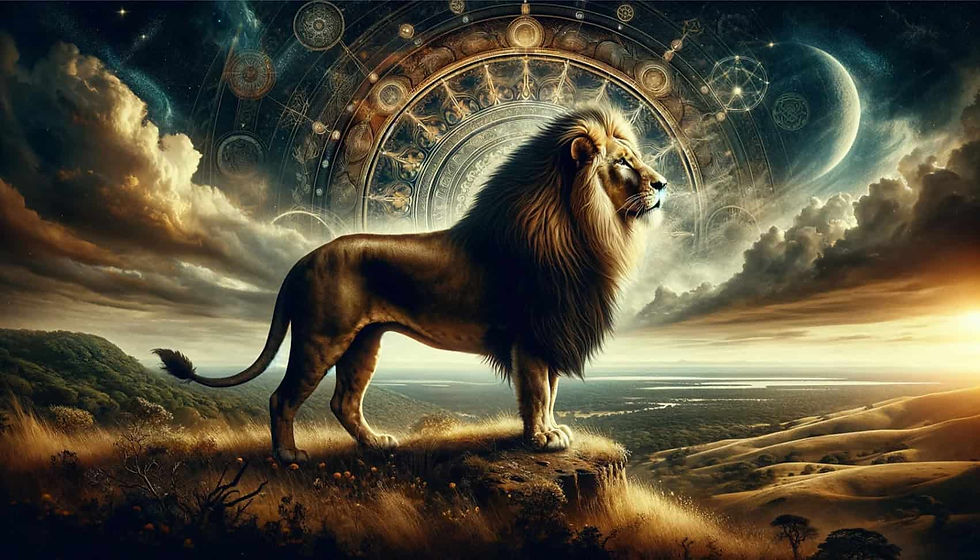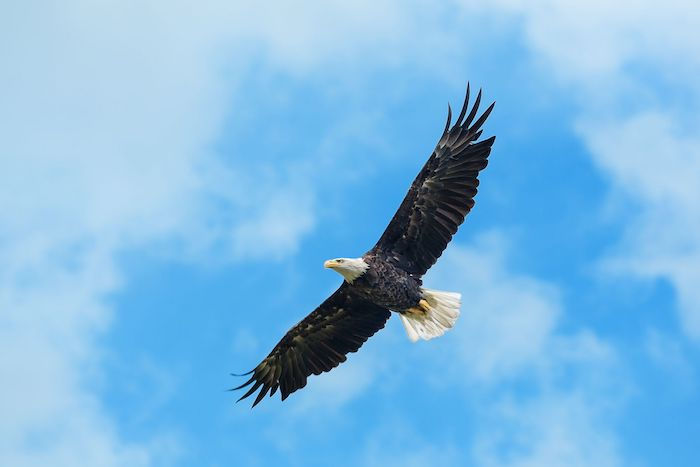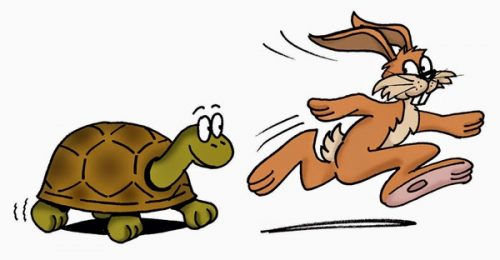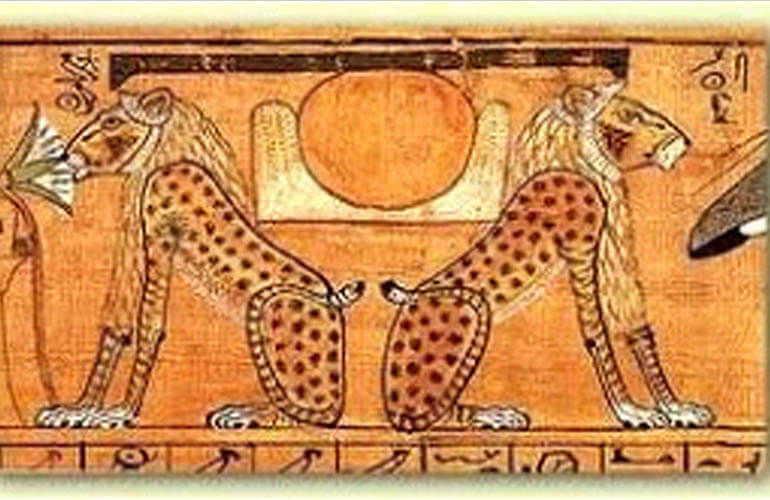Interpreting Animal Symbolism
- RayCee the Artist

- May 1, 2024
- 15 min read
Updated: Nov 3, 2024

Since ancient times, humans have sought guidance and inspiration from the natural world, and animal symbolism has held a sacred place in our collective consciousness. These magnificent creatures have long been revered as embodiments of profound wisdom, serving as powerful archetypes that reflect our deepest desires, fears, and aspirations.
In this article, I will explain the captivating realm of animal symbolism, unraveling the rich tapestry of meanings woven into the symbolism of various animals across diverse cultures and belief systems. From the mighty lion to the graceful deer, each species carries a unique essence, offering us invaluable insights into our own lives and the universal truths that bind us all.
Also, the Rainbow Bridge poem is rich in symbolism that represents the deep bond between humans and their beloved pets, as well as the hope of reuniting with them in an afterlife. Please be sure to read my article about the Rainbow Bridge Poem. ❤️ Rylee: Forever Loved and Forever in My Heart ❤️
Symbolism of the Rainbow Bridge

The Rainbow Bridge poem is a poignant poem that has become widely embraced by pet owners who have lost their beloved animal companions. The poem paints a vivid and comforting picture of an afterlife for pets, providing solace to those grieving their loss. Symbolically, the poem is rich with imagery and meanings that resonate deeply on emotional and spiritual levels.
The Rainbow Bridge poem acts as a symbolic narrative that helps people navigate their grief, offering comfort and a hopeful perspective on death and the afterlife. It reassures us that the bonds of love are not broken by death, but are instead continued and reaffirmed in a serene, eternal resting place.
Please read my Rainbow Bridge Poem article to learn all about this beautiful poem. ❤️ Rylee: Forever Loved and Forever in My Heart ❤️
The Ancient Origins of Animal Symbolism
Animal symbolism is deeply rooted in the ancient traditions and mythologies of numerous civilizations, spanning continents and transcending eras. Throughout history, our ancestors have looked to the animal kingdom for guidance, interpreting the behaviors, characteristics, and appearances of these creatures as symbolic representations of profound concepts and ideals.
The Reverence of Indigenous Cultures
For indigenous communities around the world, animal symbolism was an integral part of their belief systems and ways of life. From the Native American tribes to the ancient Celts, these cultures held a deep reverence for the natural world, perceiving animals as sacred messengers and embodiments of spiritual energies.
The Celts, for instance, revered animals as symbols of fertility, vitality, and the transition between life and death. The boar, for example, was a symbol of masculine power, while the sow was associated with the Mother Goddess and otherworldly feasts. Similarly, the Native American tribes viewed animals as spirit guides, each species representing unique qualities and lessons to be embraced on one’s personal journey. In Native American culture, the buffalo, for instance, is not just a spirit guide but also central to the cultural heritage and oral traditions, symbolizing abundance, survival, and the interconnectedness of life.
The Influence of Ancient Civilizations
Ancient civilizations, such as the ancient Egyptians, Greeks, and Romans, also played a pivotal role in shaping the symbolism associated with various animals. The Egyptians, for example, worshipped animal-headed deities, with the falcon-headed Horus representing kingship and the sky, and the jackal-headed Anubis symbolizing the afterlife and mummification. Moreover, these animals were not only worshipped but also embodied the religious symbolism that was integral to Egyptian culture, reflecting their deep spiritual and religious beliefs.
In Greek mythology, animals were often depicted as companions or manifestations of the gods themselves. The owl, for instance, was sacred to Athena, the goddess of wisdom, while the peacock was associated with Hera, the queen of the gods, representing pride, beauty, and renewal.
The Enduring Legacy of Animal Symbolism
Despite the passage of time and the evolution of human societies, animal symbolism has remained a captivating and enduring aspect of our collective cultural heritage. These symbolic representations have transcended boundaries, influencing literature, art, and spiritual practices across the globe, serving as a universal language that connects us to the profound mysteries of the natural world and our own inner realms.
The Love and Loyalty of Dogs

Dogs have been companions to humans for thousands of years and have been imbued with a wealth of symbolic meanings across different cultures and time periods. Here are some symbolic interpretations associated with dogs:
Loyalty and Fidelity
Loyalty is perhaps the most universal symbolic trait attributed to dogs. They are known to stand by their human companions through thick and thin.
Fidelity is a related concept, reflecting a dog's unwavering loyalty and trustworthiness.
Protection and Guardianship
Dogs are often seen as protectors, guarding their homes and families. This role extends into the spiritual realm in some cultures, where dogs are thought to guard the souls of the dead or protect against evil spirits.
Guardianship also refers to the way dogs are perceived as guides and protectors during journeys or transitions, both physical and metaphysical.
Healing and Therapy
In modern times, dogs are recognized for their therapeutic effects on human psychological well-being, embodying comfort and empathy.
Healing is symbolized by dogs through their work as therapy animals, providing support and alleviating suffering.
Unconditional Love
Dogs are symbols of unconditional love, giving affection freely and without judgment.
They often teach humans about selflessness and the pure joy of caring for others.
Fidelity in Mythology
In various mythologies, dogs are featured as steadfast companions. For instance, in Greek mythology, Argos is Odysseus' loyal dog, who waits for his master's return for many years.
Dogs as Spiritual Guides
In some spiritual beliefs, dogs are seen as psychopomps, creatures that guide souls to the afterlife.
They can also represent intuition and instinct, as dogs are often guided by their natural senses and impulses.
Cultural Symbolism
The symbolism of dogs varies greatly across cultures. For example, in Chinese astrology, the dog is one of the 12-year cycle animals, symbolizing loyalty, honesty, and intelligence.
In Native American cultures, dogs are often associated with faithfulness, but may also represent the duality of wildness and companionship.
Common Symbolic Associations of Dogs:
Loyalty and devotion
Protection and vigilance
Service and assistance
Companionship and friendship
Sacrifice and selflessness
Dogs are rich in symbolic meaning, often embodying the best traits humans seek in themselves and each other. They continue to be important symbols in modern storytelling, mythology, and everyday life, representing a diverse range of positive attributes.
Also, please be sure to read my article "Dog Symbolism" to learn more about dog symbolism.
The Symbolic Meanings of Animals
Throughout the ages, various animals have been imbued with a rich tapestry of symbolic meanings, reflecting the diverse perspectives and cultural lenses through which they have been viewed. In this section, we explore the symbolic significance of some of the most revered and captivating animals, shedding light on the profound insights they offer into the human experience.
The Majestic Lion

Across numerous cultures and belief systems, the lion has been revered as a symbol of strength, courage, and leadership. Its regal presence and fierce prowess have earned it a place of honor in the collective consciousness of humanity.
In ancient Egyptian mythology, the lion was associated with the sun god Ra, representing power, dominance, and the cycle of life. In Greek mythology, the lion was often depicted as a companion to the goddess Cybele, symbolizing fertility and the indomitable force of nature.
For those who resonate with the lion as their spirit animal, it may represent the courage to confront challenges head-on, the ability to lead with confidence and authority, and the strength to overcome adversity. The lion's symbolic meaning encourages us to embrace our inner power, stand tall in the face of obstacles, and cultivate a sense of nobility and dignity in our actions.
The Wise Owl

The owl, with its enigmatic gaze and silent flight, has long been revered as a symbol of wisdom, intuition, and the ability to see beyond the veil of illusion. Its nocturnal nature and keen senses have made it a powerful archetype for those seeking deeper understanding and insight. As an animal that represents wisdom, the owl embodies patience, solitude, deep connection, and intuitive knowledge. Its wide-eyes are believed to pierce deceit, encouraging individuals to see beyond illusions and uncover truths hidden in the shadows.
In Greek mythology, the owl was sacred to Athena, the goddess of wisdom and strategic warfare, representing the ability to navigate through the darkness of ignorance and emerge into the light of understanding. In Native American traditions, the owl was often seen as a messenger from the spirit world, offering guidance and foresight. It is considered the most rare spirit animal, symbolizing not only wisdom and patience but also solitude, deep connection, intuitive knowledge, and the unique ability to see beyond illusions, making it a highly revered figure in the realm of spirit animals.
Those who resonate with the owl as their spirit animal may be encouraged to trust their intuition, cultivate patience and discernment, and embrace the mysteries of the unseen realms. The owl’s symbolic meaning invites us to delve into the depths of our inner wisdom, seeking truth and clarity amidst the complexities of life.
The Graceful Deer

The deer, with its gentle grace and elegant movements, has long been revered as a symbol of gentleness, new beginnings, and the ability to navigate through life with poise and resilience.
In Celtic mythology, the deer was associated with woodland goddesses, representing fertility, renewal, and the cyclical nature of life. In Native American traditions, the deer was often seen as a symbol of love, compassion, and the ability to navigate through challenging terrain with grace and agility.
Those who resonate with the deer as their spirit animal may be encouraged to embrace a sense of gentleness and compassion, while also cultivating the ability to adapt and navigate through life's challenges with grace and resilience. The deer's symbolic meaning invites us to approach life with a sense of wonder and openness, embracing new beginnings and the opportunities for growth that arise from change.
The Powerful Bear

The bear, with its formidable strength and grounded presence, has long been revered as a symbol of courage, protection, and the ability to navigate through life's challenges with resilience and determination.
In Native American traditions, the bear was often seen as a powerful totem animal, representing strength, healing, and the ability to connect with the earth's energy. In Celtic mythology, the bear was associated with the goddess Artio, symbolizing fertility, maternal protection, and the cyclical nature of life.
Those who resonate with the bear as their spirit animal may be encouraged to cultivate a sense of courage and determination, while also embracing the importance of grounding oneself in the present moment and drawing strength from the earth's energy. The bear's symbolic meaning invites us to face life's challenges with resilience and a deep connection to our inner strength and wisdom.
The Majestic Eagle

The eagle, soaring high above the earth with its powerful wings and keen vision, has long been revered as a symbol of freedom, vision, and the ability to rise above life's challenges with grace and clarity.
In Native American traditions, the eagle was often seen as a messenger from the Creator, representing the ability to soar to great heights and gain a broader perspective on life. In ancient Roman mythology, the eagle was associated with Jupiter, the king of the gods, representing power, strength, and the ability to rise above adversity.
Those who resonate with the eagle as their spirit animal may be encouraged to embrace a sense of freedom and independence, while also cultivating the ability to gain a broader perspective on life's challenges and opportunities. The eagle's symbolic meaning invites us to soar above the limitations of our circumstances, embracing a vision of possibility and the courage to pursue our dreams.
The Power of Your Spirit Animal

One of the most profound expressions of animal symbolism is the concept of spirit animals, which has its roots in various indigenous belief systems. These powerful archetypes are believed to embody the essence of an animal, offering guidance, protection, and insight into our personal journeys and spiritual growth. Among the myriad of spirit animals, the owl is considered the "most rare spirit animal," embodying unique qualities that make it a 'rare spirit animal' sought after for its wisdom and insight.
What are Spirit Animals?
Spirit animals, also known as totem animals or power animals, are believed to be spiritual guides that walk alongside us throughout our lives. They are not merely physical representations but rather embodiments of specific qualities, traits, and energies that resonate with our individual paths and personal growth.
In many indigenous traditions, it is believed that each person has one or more spirit animals that reveal themselves through dreams, visions, or encounters with the animal in the physical world. These spirit guides are thought to offer wisdom, strength, and protection, serving as powerful allies on our journey towards self-discovery and spiritual awakening.
The Significance of Spirit Animals
The significance of spirit animals lies in their ability to act as mirrors, reflecting aspects of ourselves that we may have overlooked or forgotten. By connecting with the symbolic meaning and energy of our spirit animal, we can gain valuable insights into our strengths, weaknesses, and the challenges we face on our personal journeys.
For instance, those who resonate with the wolf as their spirit animal may be encouraged to embrace their independence, loyalty, and instinctive nature, while those drawn to the bear may find guidance in cultivating courage, strength, and a grounded presence.
Discovering Your Spirit Animal
Discovering one's spirit animal is a deeply personal and profound experience, often requiring introspection, meditation, and an openness to the messages of the natural world. There are numerous ways to embark on this journey, including:
Meditation and Visualization: Quieting the mind and opening oneself to the guidance of the spirit realm can facilitate encounters with one's spirit animal.
Nature Immersion: Spending time in nature and observing the behaviors and patterns of different animals can reveal resonances and connections with specific species.
Dream Exploration: Paying attention to recurring animal motifs or appearances in dreams can provide clues about one's spirit animal.
Intuitive Guidance: Trusting one's intuition and allowing the spirit animal to reveal itself through signs, synchronicities, or a deep inner knowing.
Regardless of the method chosen, the process of discovering one's spirit animal is a transformative journey, inviting us to embrace the profound wisdom and guidance that the natural world has to offer.
The Symbolic Meanings of Animals in Literature

The symbolic nature of animals has been a powerful tool for authors to convey complex themes and emotions in literature. Throughout the ages, writers and storytellers have masterfully woven the symbolic meanings of animals into their literary works, creating rich tapestries of metaphor and allegory that resonate with readers on a profound level. From the beloved children’s tales that shape our early understanding of the world to the complex narratives that explore the depths of the human experience, animal symbolism has played a vital role in conveying universal truths and timeless lessons.
The Enduring Legacy of Aesop's Fables
Aesop's Fables, a collection of tales dating back to ancient Greece, have left an indelible mark on the literary landscape, captivating generations of readers with their timeless wisdom and vivid animal characters. In these stories, animals are imbued with human traits and behaviors, serving as allegories for the virtues and vices that shape our lives.
The fable of "The Tortoise and the Hare," for instance, teaches the importance of perseverance and the folly of arrogance, with the slow-moving tortoise ultimately outpacing the overconfident hare. Similarly, "The Lion and the Mouse" illustrates the value of kindness and the interconnectedness of all beings, as the mighty lion is saved by the very creature he once spared.
These fables not only entertain and educate but also serve as powerful reminders of the universal truths that transcend cultural boundaries, using animal symbolism as a vehicle to convey profound lessons about the human experience.
The Symbolic Significance of Animals in Children's Literature
Children's literature has long been a fertile ground for the exploration of animal symbolism, with beloved tales and characters that shape our earliest understanding of the world around us. From the loyal and courageous Aslan in C.S. Lewis's "The Chronicles of Narnia" to the wise and gentle Wilbur in E.B. White's "Charlotte's Web," these animal characters have become enduring symbols of the virtues and values we strive to embody.
In "The Velveteen Rabbit" by Margery Williams, the stuffed rabbit's journey to become "real" serves as a poignant allegory for the transformative power of love and the enduring nature of the human spirit. Similarly, in "The Little Prince" by Antoine de Saint-Exupéry, the fox's teachings about the importance of cultivating meaningful relationships and embracing the beauty of the present moment have resonated with readers across generations.
These beloved stories not only entertain and delight but also serve as powerful vehicles for imparting timeless wisdom and nurturing the moral and emotional development of young minds, using animal symbolism as a gateway to understanding the complexities of the human experience.
The Symbolic Depth of Animals in Classic Literature
Classic works of literature have also drawn upon the rich tapestry of animal symbolism, using these powerful archetypes to explore the depths of the human condition and the universal themes that resonate across cultures and eras.
In Herman Melville's epic novel "Moby Dick," the great white whale serves as a multifaceted symbol, representing the all-consuming obsession that drives Captain Ahab, the untamed forces of nature, and the mysteries of the universe that elude our understanding.
Similarly, in George Orwell's allegorical novella "Animal Farm," the various animal characters represent different facets of human society, with the pigs symbolizing the corrupting influence of power and the other animals representing the oppressed masses.
These works, and countless others, demonstrate the enduring power of animal symbolism in literature, inviting readers to explore the complexities of the human experience through the lens of these captivating and multifaceted archetypes.
The Symbolic Meanings of Animals in Art and Culture

The symbolic meanings of animals have not only permeated the literary realm but have also found profound expression in the visual arts, adorning the walls of ancient temples, gracing the canvases of renowned artists, and infusing cultural traditions with layers of symbolic significance. Folklore throughout the African continent consistently highlights the close relationship between human beings and elephants, illustrating the significant and enduring cultural connection between African communities and elephants. Similarly, in Native American culture, animals like the buffalo are deeply embedded within art and cultural traditions, symbolizing a range of spiritual and existential concepts that reflect the community's respect and reverence for the natural world.
The Enduring Influence of Animal Symbolism in Ancient Art
Throughout the ages, ancient civilizations have left a rich legacy of artistic representations that draw upon the symbolic meanings of animals. From the intricate hieroglyphs adorning the walls of Egyptian temples to the majestic sculptures of Greek and Roman deities accompanied by their animal companions, these ancient artworks serve as powerful reminders of the enduring connection between human beings and the natural world.
In ancient Egyptian art, the falcon-headed god Horus was often depicted as a symbol of kingship and the eternal cycle of the sun, while the jackal-headed Anubis represented the mysteries of the afterlife and the sacred rituals of mummification. In Greek and Roman mythology, the owl was a recurring motif, symbolizing the wisdom of the goddess Athena, while the eagle represented the power and majesty of Zeus or Jupiter, the king of the gods.
These ancient artworks not only showcase the technical mastery of their creators but also serve as powerful repositories of symbolic meaning, inviting viewers to explore the profound connections between the natural and spiritual realms.
The Symbolic Significance of Animals in Modern Art
Modern art has also embraced the symbolic meanings of animals, with artists using these powerful archetypes to convey complex emotions, explore societal themes, and challenge the boundaries of artistic expression.
Pablo Picasso's famous painting "Guernica," a powerful statement against the horrors of war, features a striking depiction of a wounded horse, symbolizing the innocent victims of conflict and the anguish of a nation torn apart. Similarly, Henri Matisse's vibrant paper cut-outs often featured stylized depictions of animals, such as the iconic "Icarus," which symbolized the artist's own creative journey and the pursuit of artistic freedom.
In the realm of contemporary art, artists like Damien Hirst and Ai Weiwei have used animal motifs and installations to challenge societal norms, confront issues of consumerism and environmental degradation, and invite viewers to reflect on the interconnectedness of all life.
Through these diverse artistic expressions, the symbolic meanings of animals continue to resonate, serving as powerful catalysts for introspection, social commentary, and the exploration of the human condition.
The Symbolic Significance of Animals in Cultural Traditions
Across the globe, various cultural traditions have embraced the symbolic meanings of animals, weaving them into rituals, celebrations, and belief systems that shape the fabric of society. Folklore throughout the African continent consistently highlights the symbolic significance of animals, particularly in the context of cultural traditions and rituals, illustrating the significant and enduring cultural connection between African communities and elephants.
In Chinese culture, the twelve animals of the zodiac – the rat, ox, tiger, rabbit, dragon, snake, horse, sheep, monkey, rooster, dog, and pig – each hold unique symbolic meanings and are believed to influence the personalities and destinies of those born under their respective signs.
In Native American traditions, animals such as the eagle, bear, and wolf are revered as powerful totems, representing the qualities and teachings that guide individuals on their spiritual journeys. These animal symbols are often incorporated into ceremonies, dances, and artistic expressions, serving as conduits for connecting with the natural world and honoring the wisdom of ancestral traditions.
In Hindu mythology, animals like the elephant, associated with the god Ganesha, symbolize wisdom, strength, and the removal of obstacles, while the peacock, linked to the god Krishna, represents beauty, renewal, and the cyclical nature of life.
Conclusion
The symbolic meanings of animals have profoundly influenced human culture, art, and spirituality across ages and civilizations. These creatures serve as powerful archetypes reflecting our deepest wisdom, fears, and aspirations. From ancient indigenous beliefs to modern literature and art, animals symbolize virtues like courage, resilience, and our innate connection to nature.
Revering animals as spiritual guides or through symbolic stories enables us to explore universal truths transcending boundaries. As we navigate modern complexities, animal symbolism remains an inspirational wellspring - honoring these creatures cultivates reverence for the natural world and the interconnectedness of all life. Ultimately, the enduring power of animal symbolism provides a pathway to rediscover our place in the intricate web of creation.
Also, the Rainbow Bridge poem is rich in symbolism that represents the deep bond between humans and their beloved pets, as well as the hope of reuniting with them in an afterlife. Please be sure to read my article about the Rainbow Bridge Poem.







